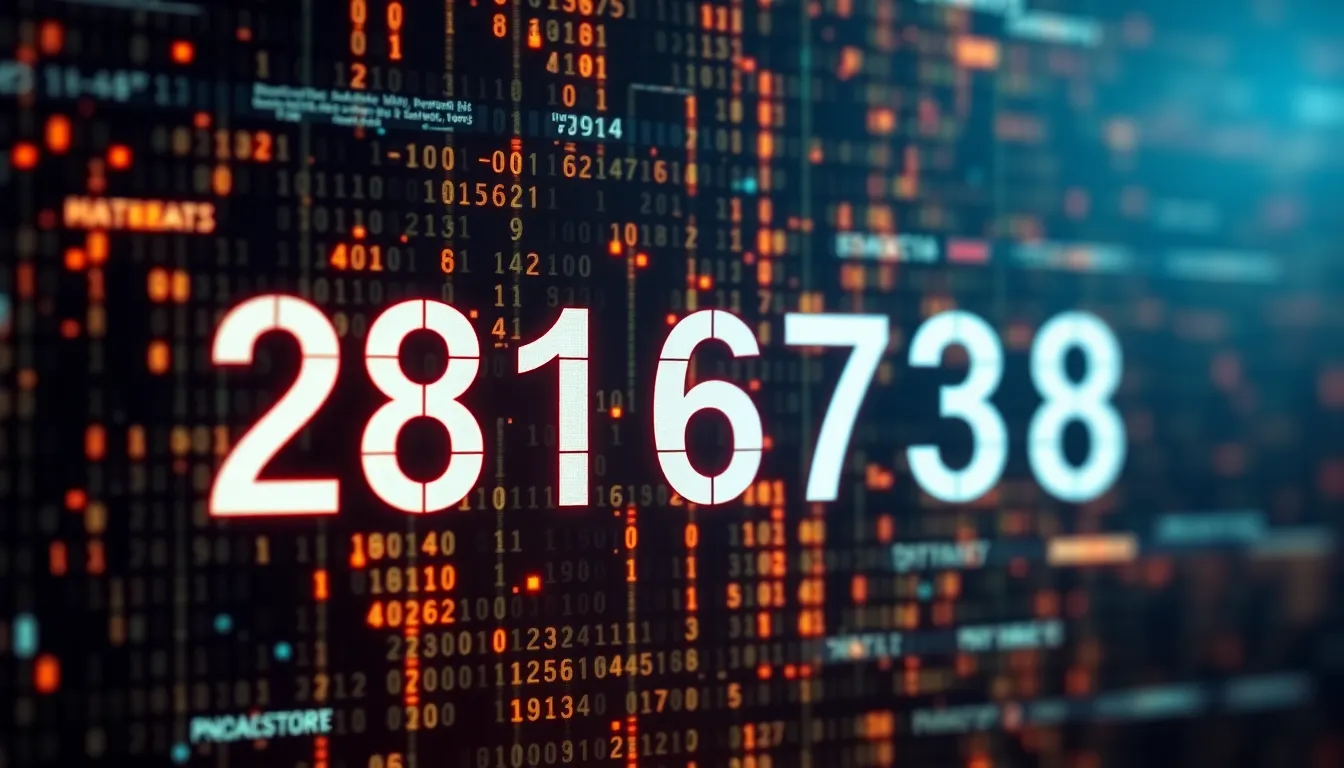Table of Contents
ToggleIn a world overflowing with numbers, one sequence stands out: 2817678438. It might look like a random jumble to the untrained eye, but this number is a treasure trove of insights waiting to be uncovered. Ever thought a string of digits could hold the key to unlocking a mystery? Buckle up, because this isn’t just any number; it’s the ticket to a thrilling exploration of its significance and potential.
Overview of 2817678438
The number 2817678438 presents unique characteristics worth exploration. Understanding its structure reveals its significance in various contexts. Composed of 10 digits, this number may appear arbitrary, yet it can play important roles in numerous applications.
In telecommunications, 2817678438 could represent a phone number, specifically within the United States. It may connect individuals, serve businesses, or facilitate communication exchanges. By examining its segments, one can identify its potential applications further.
In mathematical terms, 2817678438 embodies properties such as being an integer. Analyzing its factors provides insight into its divisibility. For instance, its placement within prime factorization could uncover special numerical properties.
Data analysis often employs such numbers for coding and identification purposes. Utilizing it in databases ensures easy retrieval and organization of information. This numeric sequence contributes to efficient data management systems.
Conclusively, the exploration of 2817678438 leads to various connections across diverse fields. It serves as a case study in how specific numbers can yield hidden meanings and functions. Engaging with numerical patterns unlocks opportunities for further exploration and understanding.
Key Features of 2817678438

The number 2817678438 offers fascinating attributes that enhance its significance across various domains. Understanding its features reveals its utility.
Design and Build Quality
Design aspects of 2817678438 reflect its potential use cases. Its composition as a 10-digit integer allows for straightforward representation in applications such as telecommunications. Each digit contributes to its identity, ensuring efficient sorting and processing. Ease of handling enhances interactions in databases and systems employing this number. Such simplicity promotes quick recognition and minimizes errors in data inputs. Its structure, therefore, supports applications requiring precision and clarity in numerical identification.
Performance Specifications
Performance specifications for 2817678438 highlight its versatility. As an integer, it exhibits standard mathematical properties useful for calculations and logical operations. Efficient handling of this number aids in various coding systems, streamlining data management tasks. Statistical analysis often incorporates it, demonstrating its relevance in numeric data sets. Additionally, encoding methods benefit from its numeric sequence, facilitating accurate data retrieval. Overall, these features enable 2817678438 to play a crucial role within diverse analytical frameworks.
User Experience with 2817678438
Exploring user experiences with 2817678438 provides insight into its practicality and relevance across different applications. Many users find its structure beneficial in various contexts.
Pros and Cons
Advantages of 2817678438 include its straightforwardness as a 10-digit integer, which simplifies communication and data representation. Users appreciate its role in telecommunications and data analysis, where efficient processing is vital. Its simplicity reduces the risk of data entry errors, leading to higher efficiency. Conversely, some drawbacks arise in its potential to be misdialed when used as a phone number. Users might also find limited applicability in non-numeric systems, impacting broader versatility.
Customer Feedback and Reviews
Customer feedback reveals a mixed reception of 2817678438. Many users commend its ease of recognition and clarity, particularly in telecommunications. Some reviews highlight satisfaction with its effectiveness in coding systems. However, a portion of users expresses concerns about its visibility in crowded data sets. Certain reviews mention difficulties in remembering such a lengthy number, particularly when used as a contact point. Overall, experiences vary, emphasizing both its utility and limitations in specific scenarios.
Comparison with Similar Products
2817678438 finds relevance among similar numeric identifiers. Other 10-digit numbers like 5551234567 serve similar functions in telecommunications. In contrast, 1234567890 may represent a sequence that lacks practical application. Each of these numbers has characteristics that define its use and context.
Numerical identifiers, such as 2817678438 and 5551234567, share usability in calling formats. They serve essential roles in data management due to their straightforward structure. Common comparisons in functionality arise, especially in their representation of phone numbers. Each number enables seamless communication and data recognition across telecom networks.
Analytical applications present additional comparisons. 2817678438 demonstrates significant mathematical properties, much like other numbers in similar contexts. Utilization in coding systems connects it with numbers designed for identification. Numbers like 9876543210 also participate in data organization, revealing interesting parallels.
User experiences highlight variances among these identifiers. One customer may prefer 2817678438 for its ease of recognition. Another might find 5551234567 more memorable in applications. Each number conveys unique advantages while presenting potential drawbacks in crowded data sets.
The technical aspects of these numbers also warrant discussion. Comparisons to 2468135790 show varying levels of visibility in databases. Users may find some numbers easier to manage, impacting operational efficiency. Overall, understanding the differences enriches insight into these numeric products and their applications in various domains.
The exploration of 2817678438 reveals its multifaceted nature and significance across various domains. Its unique structure not only facilitates communication but also enhances data management efficiency. As a 10-digit integer, it serves as a practical tool in telecommunications and coding systems.
User experiences highlight its strengths in recognition and usability while also pointing out some challenges. The number’s role in data analysis and mathematical properties further underscores its relevance. Overall, 2817678438 stands as a testament to how numbers can carry deeper meanings and functions, inviting continued inquiry into their applications and implications.






